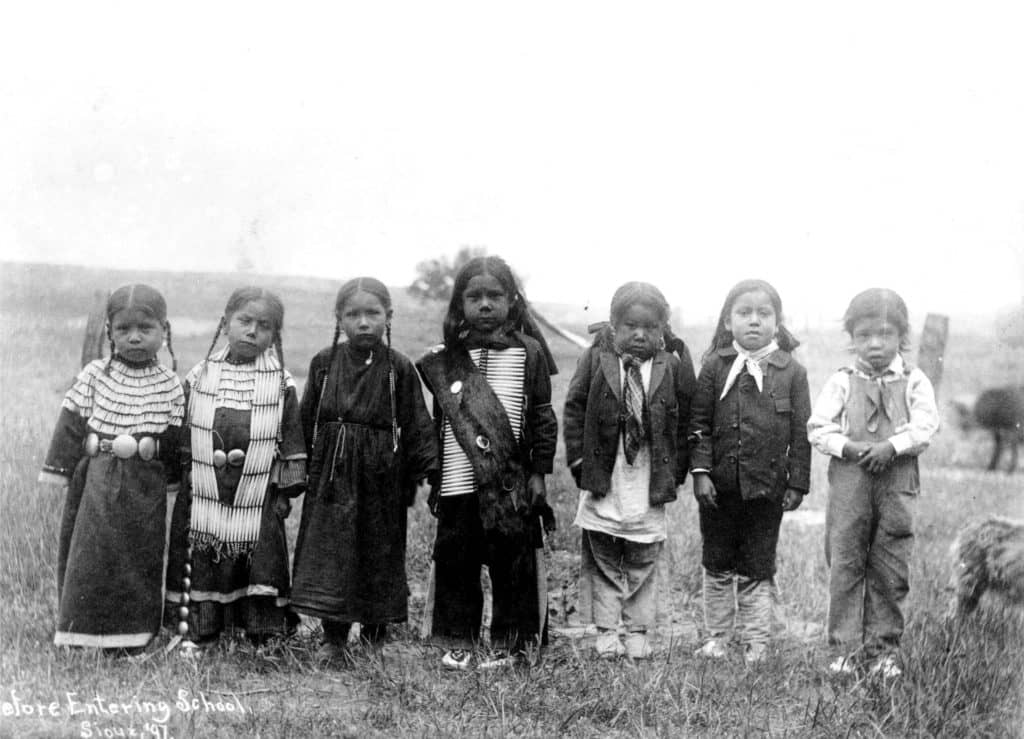Create
New James Museum exhibit shines a light on Indian boarding schools

One of the more shameful chapters in American history was inaugurated in St. Augustine, Florida in the 1870s, when former Civil War officer Richard Henry Pratt was put in charge of Indian prisoners at Castillo de San Marcos, then known as Fort Marion.
Pratt’s big idea was assimilation. “He decided that while he had them in his custody, he would educate them to white culture,” says Laura Hine, executive director of the James Museum of Western and Wildlife Art. “He would educate them in certain trade skills. He cut their hair and wouldn’t let them speak their language.”
The newest exhibit at the James, Away From Home: American Indian Boarding School Stories, is focused primarily on what Captain Pratt did next.
“He talked to the federal government and said ‘We should do this for children, because it’s much more expensive to kill an Indian than it is to kill the Indian in a child.’ And our government went along with the idea, and started to forcibly remove Native children from their homes.”
Until the 1920s, when compassion, consciousness and common sense began to awaken, Native American children were routinely “removed” from reservations and sent to Christian-run facilities to be “indoctrinated.” Pratt himself famously said: “Transfer the savage-born infant to the surroundings of civilization and he will grow to possess a civilized language and habit.”
With Pratt himself as headmaster, Carlisle Indian Industrial School opened in Pennsylvania in 1879.
“It’s especially painful because it’s children,” remarked Hine, who’s also an elected member of the Pinellas County School Board. “And we all can imagine what that’s like, to have your child taken away from your home.”

Sioux children on their first day of school, 1897. Library of Congress.
On loan from the Heard Museum in Arizona, Away From Home (on view through March 16) includes historical photographs, actual artifacts, stories and testimony from some of the thousands of children who were relocated to these facilities, where their hair was cut, their bodies were de-loused (whether they need it or not) and they were given English names and re-dressed in Victorian clothing.
The Indian boarding school system, in its early years, caused severe generational trauma. Over time, things began to change, and the schools were transformed into traditional places of learning that included studies of Native culture and ceremony.

Art by Navajo painter Harrison Begay (1917-2012), who studied at the Santa Fe Indian School in the 1930s. Tom and Mary James Collection.
The exhibit also includes a selection of art, from the Tom and Mary James Collection, by Native Americans who attended boarding schools – and had positive experiences – in the 1940s and beyond.
This colorful art is in stark contrast to the stark material from the late 19th and early 20th centuries, when the future for children of Indian descent was bleak at best.
Hine believes that even the hard realities of life in America – the great civil rights struggle, the World War II Japanese internment camps and yes, the Indian boarding schools – must be taught, along with the country’s great victories and accomplishments.
“Our mission here at the James Museum is to provide experiences that inspire human connection through art,” she said. “If we need anything right now in this country, in this state, in this world, it’s human connection. And a memory of our shared humanity. It’s a vital time, because of the increased civic discourse around what we teach in history in our schools.
“It’s part of maintaining our humanity as we continue to form a more perfect union.”
Tickets and more information at the James Museum of Western and Wildlife Art website.








Ron Rhodes
February 6, 2022at7:25 pm
It was disappointing to seethe exhibit about the Indian Schools today. As a Canadian, I was shocked at the overall whitewashing of those schools. Where are the reports about the terrible abuse on the children? Yes, there are a couple of comments, but obviously you did not care to shock the St Pete public with the truth. The amount of space used showing all the positive aspects of the schools, especially in recent years did nothing to teach the public about what really happened there!! Who cares about the recent students who excelled in American football?
I am a Canadian and have been aghast about what happened in Canadian residential schools. Those schools were started because Canada looked to your country and Mr Pratt’s obscene ideas.
There were some interesting items and photos etc for me in the exhibit, but overall I found it to be sorely lacking. Take a look at what Canada is doing now, please.